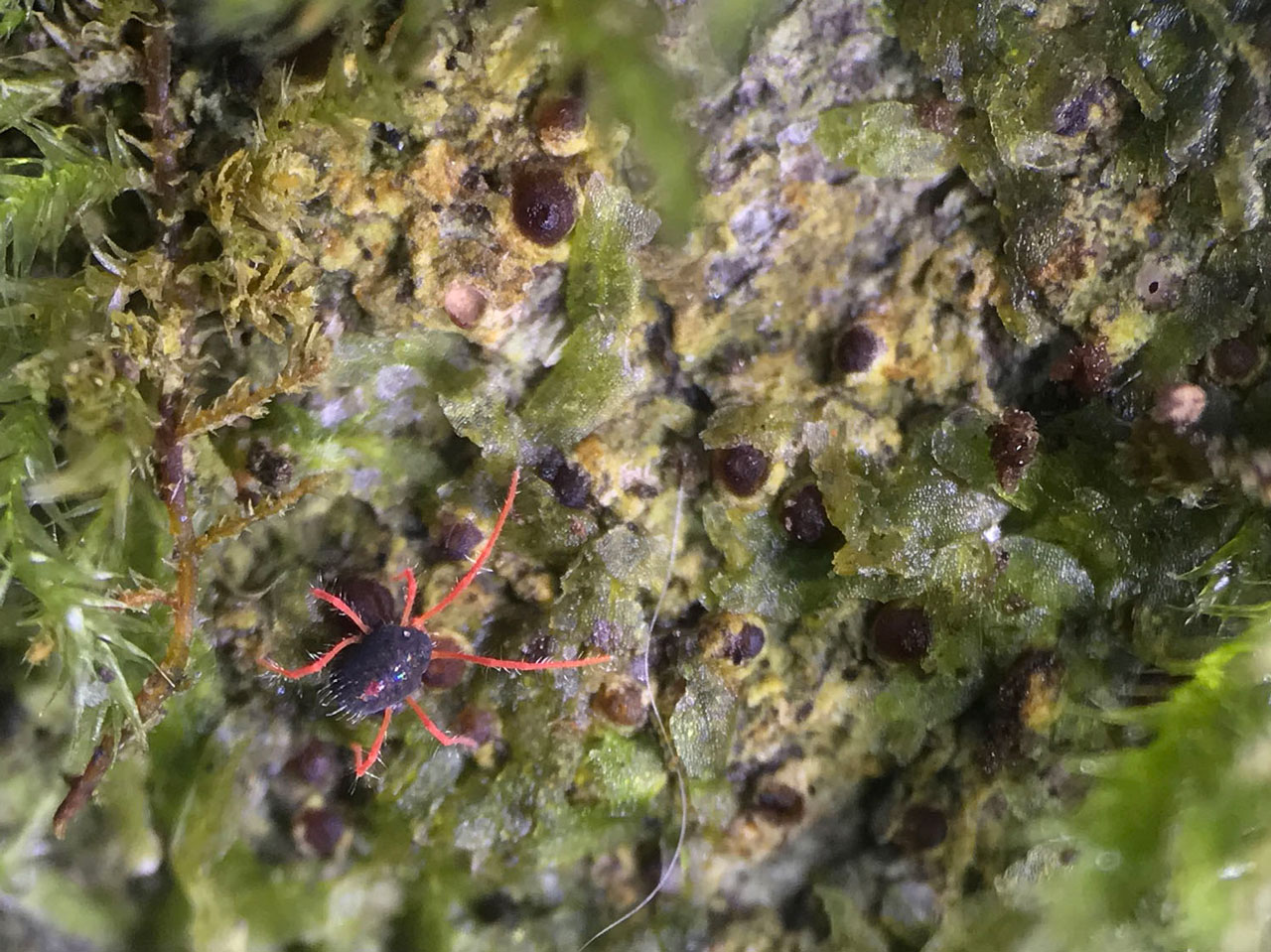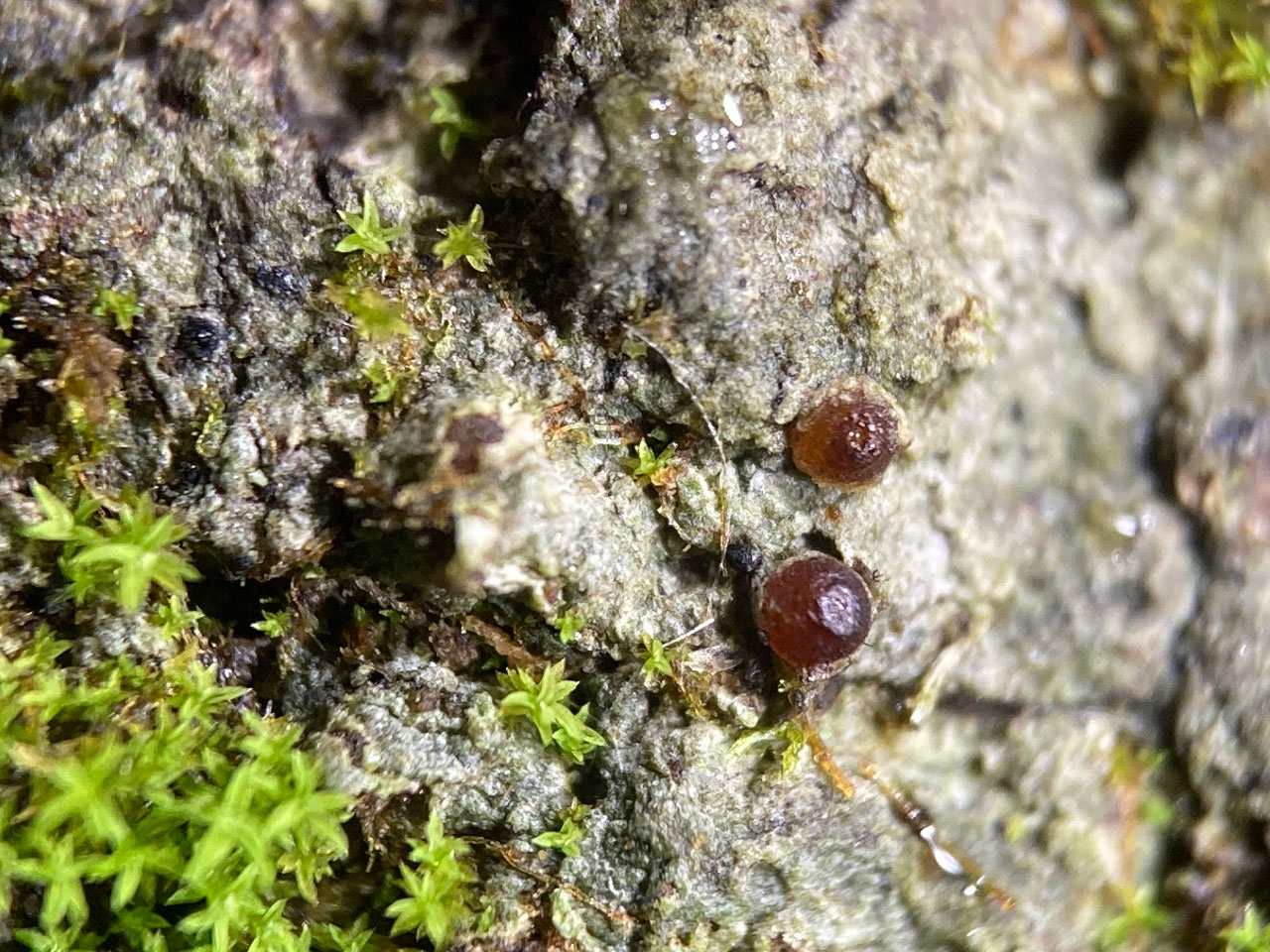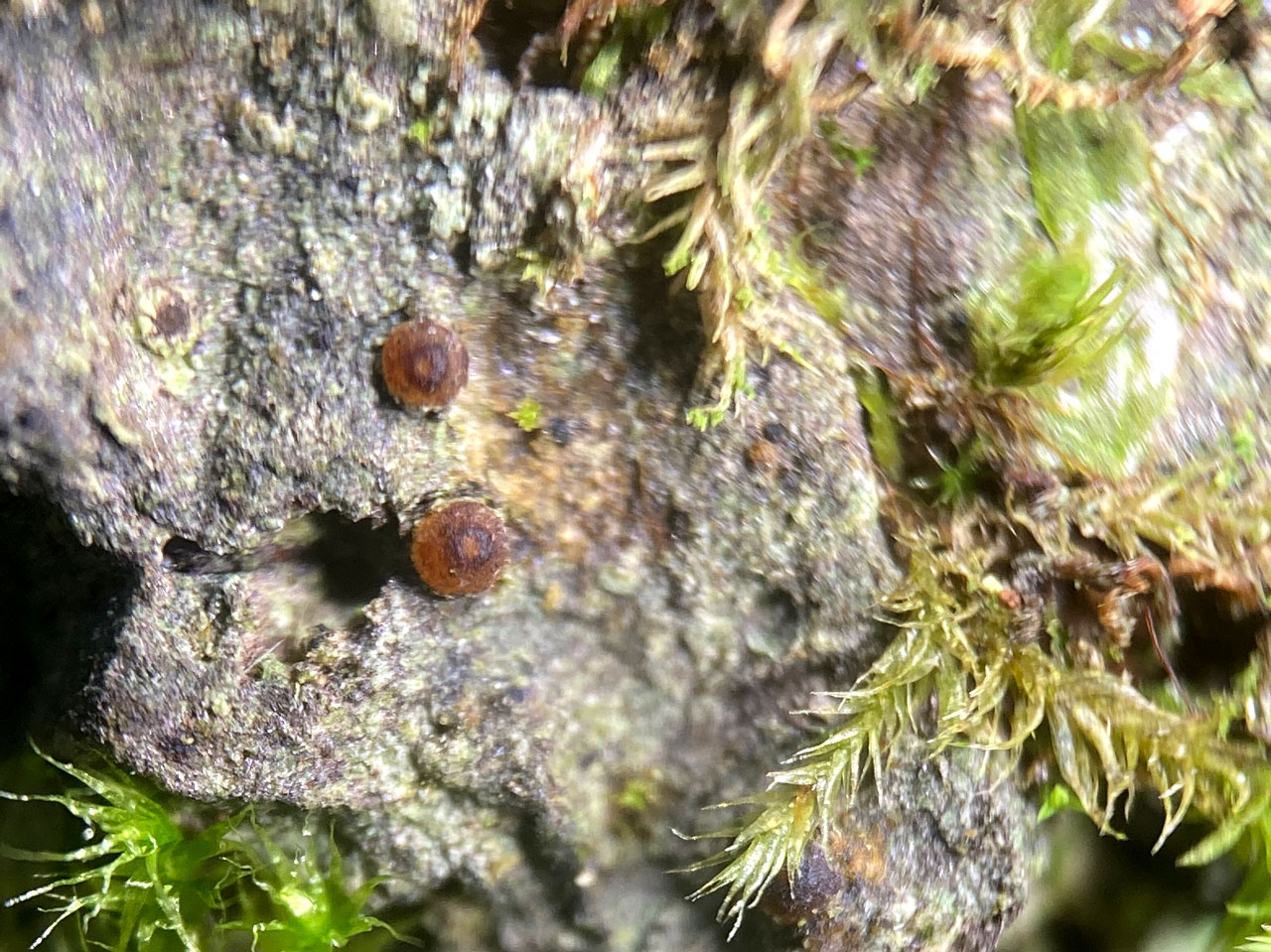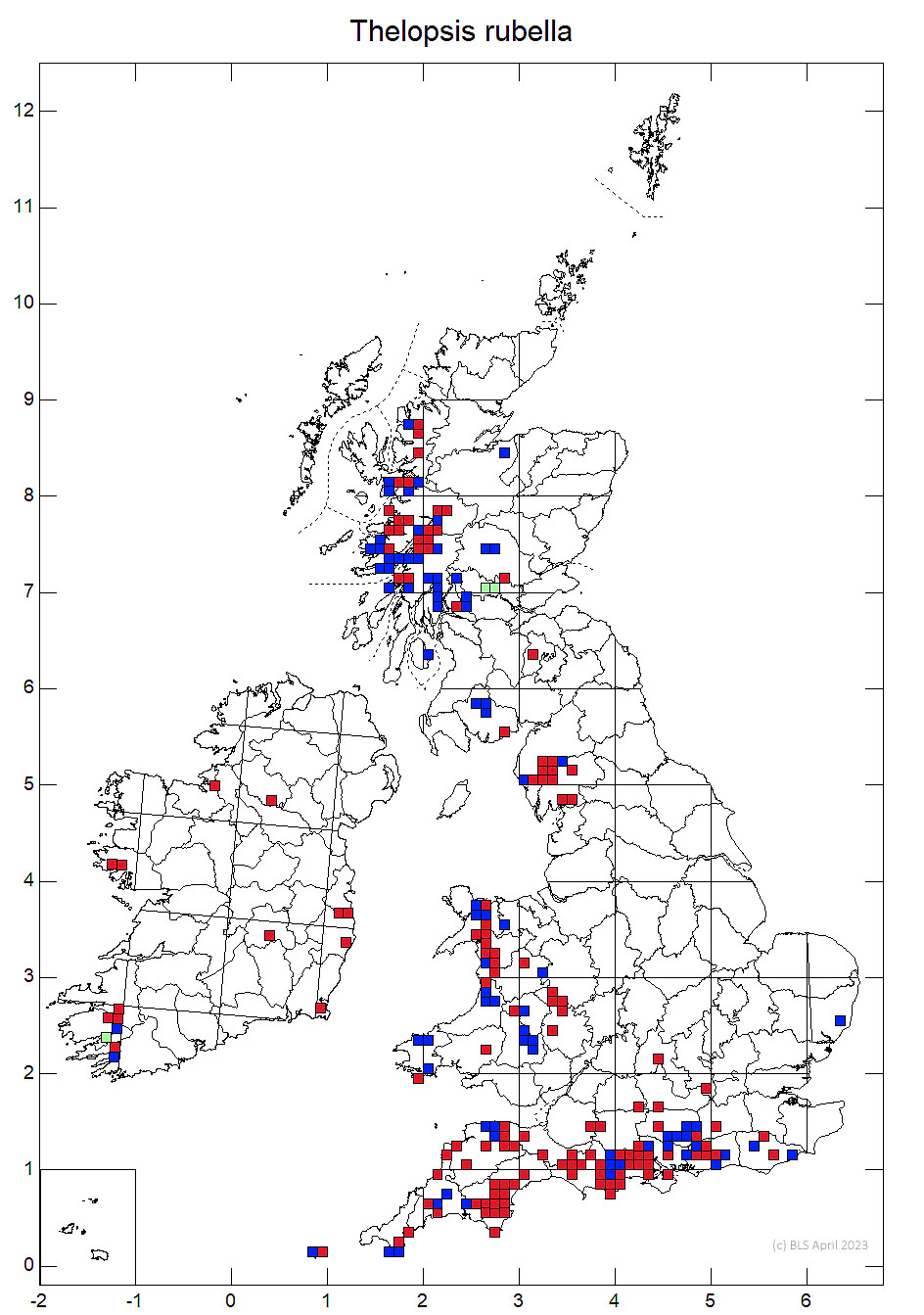Thelopsis rubella
A tiny jewel of a lichen, with the red-brown perithecia translucent and gem like when wet. The lichen is also typically found in magical places, from ancient deer parks in Sussex and ancient Beech – Holly woods in the New Forest to welsh ravines and coastal Ash – Elm rainforests in the western Highlands. The red-brown perithecia on a non sorediate waxy grey-green thallus are very distinctive; only the sparingly fertile Thelopsis corticola is similar, but this has a sorediate thallus.
Thallus superficial, thin to thick, grey to grey-green or pale brownish, often wide-spreading and diffuse. Perithecia scattered, discrete, at first ± immersed, less than one quarter immersed when mature, 0.4–0.6 mm diam., sometimes with the lower part covered with a ring or with patches of thallus fragments, but without a well-defined thalline layer; pale pink-brown, red-brown to dark brown; exciple distinctly hyphal, of intertwined hyphae with thick gelatinised walls, innermost layer of exciple of ± thin-walled hyphae; exciple colourless within, outer part orange-brown, K± slightly darkening; hymenial gel I–, K/I–; periphyses unbranched or sparingly branched, up to 65 µm long. Asci (100–) 150–200 × (16–) 18–25 µm, 100- to 150-spored, wall I+ dull grey to dull red, K/I+ blue. Ascospores (10–) 12–16 (–18) × 4–8 µm, ellipsoidal to cylindric-ellipsoidal, the ends rounded, (1-)3-septate, without a distinct perispore.
The perithecia are unusual among British lichenised fungi in being relatively short-lived and are soon replaced when shed; they are usually most abundant in winter and early spring. Fertile Thelopsis corticola has very similar perithecia but these are deeply immersed in the thallus and the ascospores are smaller ((7.5–13×3–5 μm). Porina leptalea is superficially similar but is usually on smooth bark, the perithecia are smaller and usually more orange and the asci are 8-spored. The young apothecia of Pachyphiale carneola are similar in colour, size and diameter to the perithecia of Thelopsis rubella but differ in the gradual widening of the initial pore-like disc; the apical pore of the perithecia of T. rubella is usually easily seen when wet (×20). Swinscowia thelopsidoides has similar but smaller perithecia and 3-septate ascospores but they are produced in 8-spored asci. T. flaveola Arnold (1873), with yellowish perithecia and aseptate ascospores, occurs on trees in continental Europe.
On trunks of veteran, broad-leaved trees, particularly Oak, Beech and Ash, with bark of pH >5.0; mostly in the Lobarion or the Agonimion octosporae communities in ancient woodlands or parklands, where it is an important indicator species; often in furrows or intermittent rain tracks in association with the liverwort Metzgeria furcata.

Local, a widely distributed oceanic species in Britain and Ireland, from S. England (E. Sussex to Cornwall) to Scotland (West Ross, Skye and Nairn), absent from most of C. & E. England and E. Scotland, rare in Ireland.
This lichen can be very locally frequent, especially in the south, but is rarer to the north. It is largely confined to high quality old growth woodland and old parklands. Smaller relic populations can be threatened by habitat loss, but it is not nationally threatened.
Cannon, P., Coppins, B., Aptroot, A., Sanderson, A. & Simkin, J. (2024). Ostropales genera I, including Absconditella, Belonia, Clathroporinopsis, Corticifraga, Cryptodiscus, Cryptolechia, Francisrosea, Gomphillus, Gyalecta, Gyalidea, Gyalideopsis, Jamesiella, Karstenia, Nanostictis, Neopetractis, Pachyphiale, Petractis, Phialopsis, Phlyctis, Ramonia, Sagiolechia, Secoliga, Sphaeropezia, Spirographa, Stictis, Thelopsis, Thrombium and Xerotrema. Revisions of British and Irish Lichens 38: 1–60.
Text by Neil A Sanderson



